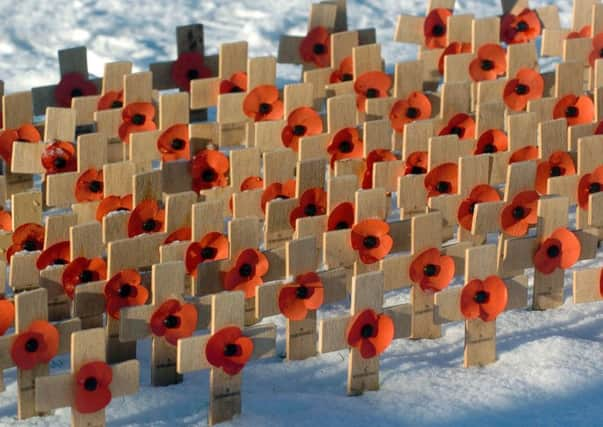The Education Matters column with Dennis Richards


There is clear evidence that young people are, if anything, more involved than any previous generation. Why so? As you would expect, I will put in a plea for some of the credit to go to the nation’s teachers. And History teachers in particular. Coupled with their knowledge and commitment, the development of modern transport has made the places where these events happened, easily accessible. I dare say every Secondary School in the Harrogate area organises an annual school trip to the Somme, to Normandy or to Ypres.
Whatever the age of the visitors, it is the aura of these places which has such an impact. To see where it happened, to stand in stunned silence in front of thousands of headstones in serried unending rows, is an experience like no other.
Advertisement
Hide AdAdvertisement
Hide AdNo one who has walked across the scarred fields at Beaumont Hamel on the Somme, or Vimy Ridge can ever forget it. And for many students it is the opportunity to discover more about their own families.
A significant number of them will have some, perhaps distant, and maybe even long-forgotten, relative lying forever in a foreign field. Placing a wreath on a long lost great-great uncle “Tommy’s” grave is a memorable experience for anyone, let alone a child.
Even if you are unable to point to one of your own there are always new discoveries to be made. Did I know that Wilfred Owen is a celebrated war poet? Yes, of course.
I even know where he is buried and the date he died. Did I know that he had taught English In France? Or that he has strong Ripon connections? No. A visit to Ripon Cathedral is a must if you want to know more. And what about The President of France’s British great grandfather? George Robertson fought on the Somme aged 19.
Advertisement
Hide AdAdvertisement
Hide AdHe stayed on in France as did so many others, and his middle daughter Jacqueline married into the Macron family.
Macron himself was of course born in Amiens and his childhood shaped by the war-torn environment in which he was raised. It will be a poignant moment when together with Theresa May he lays a wreath at Thiepval on Remembrance weekend.
Nor was I aware that the last British soldier to die on the Western Front was George Edwin Ellison of Leeds. He was shot at 9.30am on 11 November 1918.
A plaque in his memory has been placed in Leeds Railway Station this very week. 16 year old John Parr was the first British soldier to die in the conflict. By the most poignant of coincidences, Ellison and Parr are buried just yards apart in St Symphorien cemetery near Mons.
Advertisement
Hide AdAdvertisement
Hide AdAnd so it is here in Harrogate also, that this week the “air is heavy with remembrance”, a striking phrase used by Mark Pallant, Director of Music at St Aidans when introducing the wonderful Roeslare (Ypres) Chamber Choir, invited to the school for one of the many special events in the town this year. On Sunday 11 November at 7pm it will be the turn of Harrogate Grammar School to host a concert on behalf of Harrogate International Partnerships.
Both World Wars had a direct impact on two of Harrogate’s twin towns.
Bagneres de Luchon in the Pyrenees was one of several famed escape routes for stranded British airmen. Barrie in Canada has strong direct links with Harrogate through its wartime association with the RAF and local wartime airfields.
Lest we forget. Thankfully no sign of that.